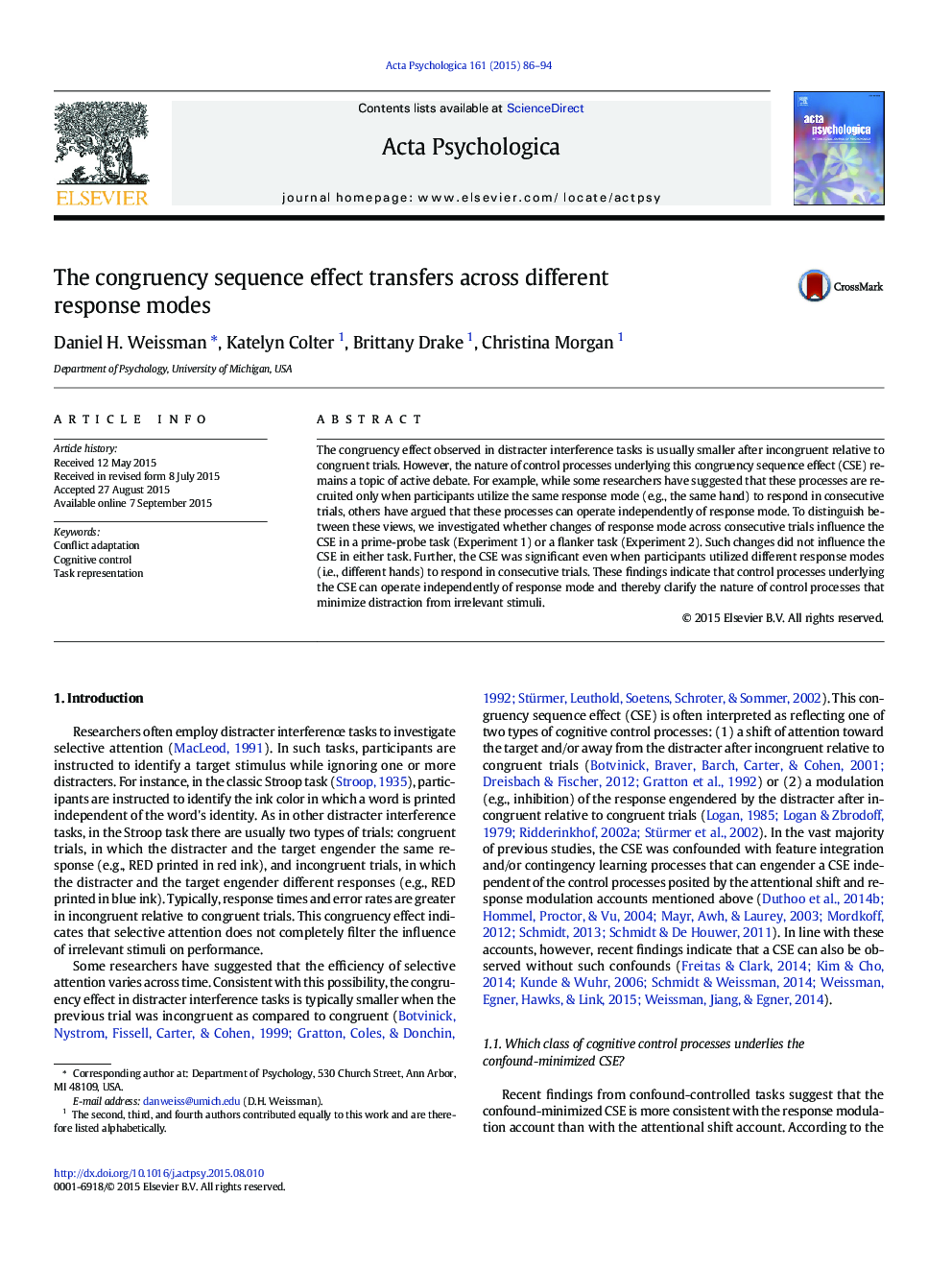| Article ID | Journal | Published Year | Pages | File Type |
|---|---|---|---|---|
| 7277240 | Acta Psychologica | 2015 | 9 Pages |
Abstract
The congruency effect observed in distracter interference tasks is usually smaller after incongruent relative to congruent trials. However, the nature of control processes underlying this congruency sequence effect (CSE) remains a topic of active debate. For example, while some researchers have suggested that these processes are recruited only when participants utilize the same response mode (e.g., the same hand) to respond in consecutive trials, others have argued that these processes can operate independently of response mode. To distinguish between these views, we investigated whether changes of response mode across consecutive trials influence the CSE in a prime-probe task (Experiment 1) or a flanker task (Experiment 2). Such changes did not influence the CSE in either task. Further, the CSE was significant even when participants utilized different response modes (i.e., different hands) to respond in consecutive trials. These findings indicate that control processes underlying the CSE can operate independently of response mode and thereby clarify the nature of control processes that minimize distraction from irrelevant stimuli.
Related Topics
Life Sciences
Neuroscience
Cognitive Neuroscience
Authors
Daniel H. Weissman, Katelyn Colter, Brittany Drake, Christina Morgan,
